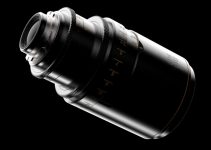More often than not, it’s very easy for novice colorists to get carried away with their color grading. Whether you’re trying to achieve the exaggerated blue/orange aesthetic of Sam Kolder or the popping hues of Wes Anderson flicks, it’s important to pay close attention to how your skin tones’ tint is altered by the applied grade. As you start implementing your own coloring style and experiment with different tweaks, it’s quite possible to affect skin tones in a way so that they may lose definition and color accuracy in the process.
While there are various tutorials online that cover proper skin tone color retention, you should definitely check out this video tutorial by seasoned colorist Casey Faris as he explains a few basic, yet quite effective techniques to enhance skin tones in Resolve 15.
To start off with this Resolve 15 workflow, select the LUT you wish to use for your particular shot. It could be a very subtle preset that should add a bit of contrast to the scene, just like the one Faris used in the video above. After adding your LUT, you’ll also need to create a Serial Node between your main footage node and LUT node.
Afterward, head over to the Qualifier Pane and click on the menu button that says HSL and switch to 3D. Your cursor will then change to an eyedropper. Next, go into the preview monitor and select the areas of your talent’s skin, including the face and arms. As you click, the colors you pick will be added to the Qualifier pane.
To see which colors you’ve isolated, click on the Magic Wand/Highlight button located at the top left side of the preview monitor. If you see that there are colors that shouldn’t be part of your selection, switch to the subtraction eyedropper and click on that specific area in the preview monitor.
As you select colors to isolate in your scene, ensure that you add/remove them as best as you can. Next, adjust the Clean Black and Clean White parameters to help clean up the edges of your subject.
If your subject is located in one particular area of the frame, consider using a window to isolate the qualifier effect to your actor/actress. The last step inside of the Qualifier pane is to uncheck the Show Paths option.
Now that you’ve isolated your subject’s skin, you can make minor adjustments to restore any lost details or colors from using your LUT. Faris recommends adding a very subtle S-Curve to increase contrast in the skin, thus helping add depth and providing increased image detail. Additionally, you can use RGB curves or color wheels to fine-tune the colors of the skin, making it warmer or cooler depending on the LUT you’ve used.
The importance of having accurate skin tones in a color grade cannot be understated. Many beginner colorists and video editors tend to forget that as coloring is applied to video, skin color can easily appear unnatural. While the process of isolating and correcting skin tones may be a bit tedious and intimidating at times, putting in the extra effort will help your project appear more professional and aesthetically pleasing in the end.
[source: Casey Faris]
Disclaimer: As an Amazon Associate partner and participant in B&H and Adorama Affiliate programmes, we earn a small comission from each purchase made through the affiliate links listed above at no additional cost to you.
Claim your copy of DAVINCI RESOLVE - SIMPLIFIED COURSE with 50% off! Get Instant Access!





